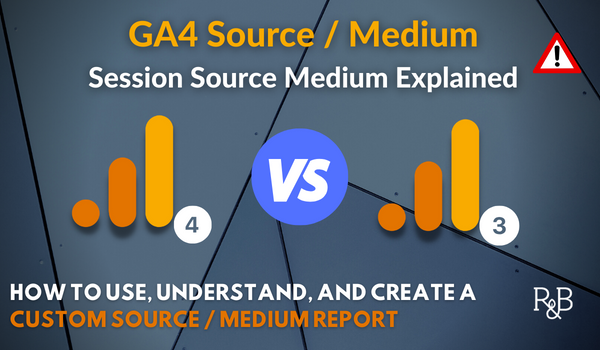Introducing the Influence of Second Dimension in Google Analytics on Data Evaluation and Insights
In the world of data analytics, the usage of additional measurements within Google Analytics has emerged as a critical device for removing deeper understandings and unraveling complicated patterns that might otherwise remain covered. By peeling back the layers of primary information sets, second dimensions supply a nuanced viewpoint that improves the understanding of user actions, website efficiency, and the efficiency of advertising techniques.
Discovering the Idea of Secondary Dimensions
Second dimensions in Google Analytics provide added insights by allowing users to examine key information together with a second feature. This function allows a more complete understanding of the main data by including another layer of details for evaluation. By including second measurements, individuals can delve deeper right into the information and uncover useful connections that might or else go unnoticed. By combining the primary information of site web traffic with additional measurements like demographics or habits, marketing professionals can acquire a more thorough view of their target market and tailor their methods accordingly.
Recognizing the concept of additional dimensions is vital for making the most of the capacity of Google Analytics. It allows individuals to sector information effectively, determine patterns, and make notified choices based upon an extra total photo of their analytics data. By checking out the numerous second measurements available in Google Analytics, users can unlock new insights and enhance their electronic advertising and marketing efforts. Fundamentally, additional measurements offer as an effective tool for improving information analysis and driving workable outcomes.
Enhancing Information Interpretation With Secondary Measurements
Having developed the foundational understanding of secondary measurements in Google Analytics and their crucial function in data evaluation, the emphasis now shifts in the direction of leveraging these second features to enhance the analysis of analytics information (what is a secondary dimension in google analytics). By incorporating second dimensions right into data evaluation, experts can acquire much deeper insights right into individual behavior, internet site efficiency, and advertising effectiveness

Additionally, additional measurements aid in contextualizing main information metrics by supplying additional layers of info. This contextualization help in understanding the 'why' behind the information trends, assisting analysts make informed decisions and optimizations to enhance total efficiency. Eventually, integrating secondary measurements enhances the information analysis process, leading to even more calculated activities and significant insights.
Revealing Hidden Insights With Additional Measurements
Checking out the depths of analytics information with additional review measurements discloses valuable insights that would certainly otherwise continue to be covered. By including additional dimensions in Google Analytics, companies can unearth surprise patterns, patterns, and connections that supply a more extensive understanding of customer behavior and website performance. These added layers of information allow analysts to dig much deeper into the main dimensions, such as traffic sources or touchdown pages, and acquire a much more nuanced point of view on exactly how various variables interact with each various other.
Through making use of additional dimensions, experts can sector and compare data across different dimensions, enabling them to recognize specific elements that affect individual engagement, conversion prices, and total success metrics. As an example, by pairing the primary dimension of 'tool group' with the secondary dimension of 'age,' online marketers can identify which age demographics like accessing the web like this site via mobile phones versus desktop computers. This degree of granularity equips businesses to make data-driven decisions and enhance their approaches for much better results. Eventually, uncovering surprise understandings via secondary dimensions enhances the depth and precision of data evaluation, bring about more informed decision-making and improved performance end results.
Leveraging Second Dimensions for Actionable Analytics
Structure upon the insights introduced with second dimensions in Google Analytics, companies can currently harness this enriched data landscape to drive workable analytics and strategic decision-making. By leveraging secondary measurements, companies can delve much deeper into their data to draw out valuable patterns, patterns, and connections that might have previously gone unnoticed. This much deeper degree of evaluation makes it possible for services to get a more detailed understanding of customer actions, campaign efficiency, and general web site efficiency.
One secret advantage of utilizing additional dimensions for workable analytics is the capability to segment information based upon details criteria. This segmentation enables organizations to tailor their projects and techniques to various audience teams, leading to much more targeted and reliable advertising initiatives - what is a secondary dimension in google analytics. Furthermore, secondary dimensions supply an even more all natural sight of user interactions, enabling companies to enhance their internet site content, style, and total user experience
Maximizing Decision-Making With Secondary Dimensions
To boost tactical decision-making in analytics, leveraging secondary dimensions in Google Analytics can give an extra nuanced perspective on user behavior and project efficiency. By including second measurements into data analysis, companies can delve much deeper right into the specifics of their internet site site visitors' interactions and involvement patterns. This added layer of details permits an extra comprehensive understanding of how different variables, such as demographics, gadgets, or web traffic sources, effect vital performance indicators.

Conclusion
In conclusion, making use of additional dimensions in Google Analytics plays a vital function in enhancing information analysis and discovering hidden insights. By discovering this concept, one can acquire a much deeper understanding of user habits and make informed decisions based upon actionable analytics. Leveraging additional dimensions enables a more thorough interpretation of data and optimizes the effectiveness of decision-making procedures.
